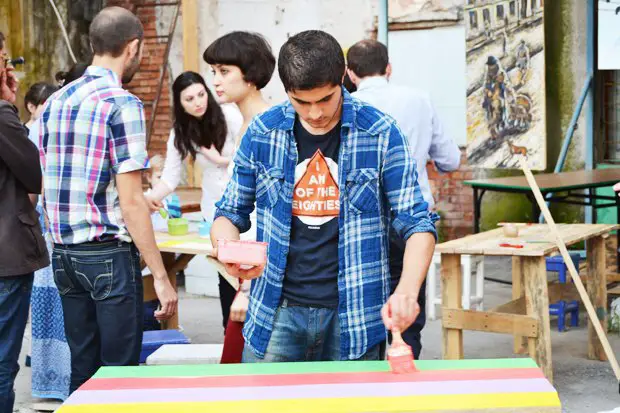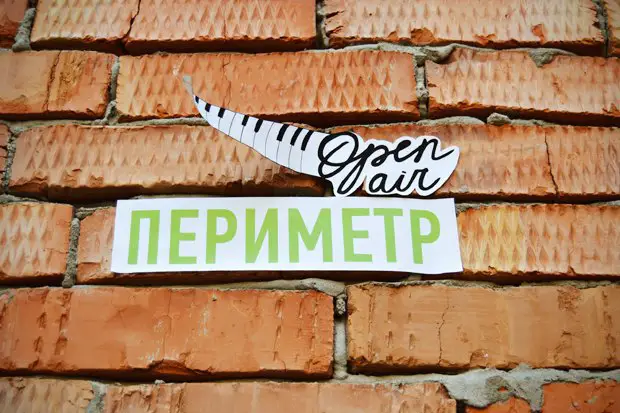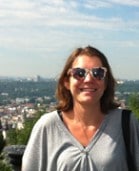The Village is a Russian-language publication in Moscow, St. Petersburg, and Kiev that seeks to inform locals about their various cities, upcoming events, urban changes, and history. The following is an interesting entry from a series of articles which The Village introduces with the following statement: “Until recently, it seemed that everyone copied Moscow and St. Petersburg, and ultimately, everyone dreamed of moving to those cities. Now, it is evident that positive energy is building up and in other cities, even allowing them to sometimes outperform the capitals. This is precisely why The Village has begun a series called “New Geography,” dedicated to the rest of Russia.” This entry has been translated for the first time into English by SRAS Translate Abroad Scholar scholar Caroline Barrow. Read the original Russian here.
Karim Akizov is Director of the Collision Creative Workshop and founder of Perimeter; the following was translated by SRAS Home and Abroad Scholar Caroline Barrow.
How to Change the Caucasus’ Image
By Karim Akizov
A group of activists from Nalchik, the capital of the small Kabardino-Balkaria Republic in Russia’s restive Caucasus region, took a dilapidated building in the historical center of the city and turned it into an art cluster. Named “Perimeter,” this cluster is now complete with a workshop, a concert square, an open-air theater, and a street-art gallery.
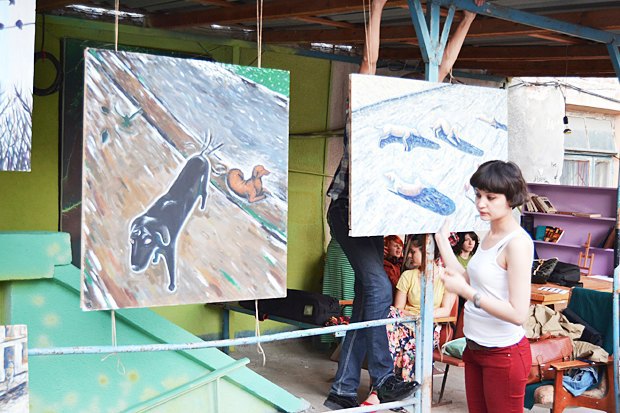
Nalchik
Events in the Caucasus over the last 10-15 years have badly battered the region’s image and the attitude taken towards it both in the North Caucasus’ and beyond. Local youth prefer to build their lives in other Russian cities or abroad. Together with students and young designers from the Impromptu Art Club, we tried to change something at the university: to build up city exhibitions and art initiatives, but the reaction there was too weak.
Two years ago, following the popular trend of re-branding Russian cities, we developed our plan to develop Nalchik. We created a logo, thought of a slogan, conducted street art initiatives, showed films under the open sky, and began communicating on social networks. All of this was to unite the efforts of the city’s administration and active citizens. The only thing left to do was to create an open space, where we could share experiences, lead master classes, discuss problems, and simply socialize.
The Perimeter Project originated in search for a way out of the current situation. The Collision Creative Workshop was based in an administrative building built in 1937 in the city’s historical center. This building and the area around it was in disrepair with broken asphalt, trash thrown everywhere, and a dilapidated façade. Most importantly, the building’s tenants did not have any motivation to improve the area, believing it was the city’s responsibility. Since the city had no money to make repairs, they simply gave up. That is when we set out to do it ourselves.
Perimeter’s Logo
Perimeter
We gathered a team and decided to start an art cluster to improve the crumbling property. In the evenings, we had parties, barbeques and acoustic concerts to build a spirit of collective construction. Some people from the Green House landscaping store helped us. Together, we created a small green zone and planted shrubs. We learned that there can be a normal lawn under four layers of asphalt, that day workers can haul out all the trash almost for free, and that businesses were the most afraid of change.
For concerts, we needed to build a stage. We put together our money, but it was still not much. There were other renters in the building, which was now under our control. We hoped that our good intentions would encourage them to action. But they thought that we wanted the public space for our commercial purposes. The owner of a pharmacy warehouse, located on the first floor, helped us. We spent a long time explaining to him that good would come, if the yard were cleaner and cozier. He doubted us for a long time, but in the end worked with us. The stage stands to this day, and our neighbor enjoys sitting in the armchair we added to the yard.
In May, Perimeter held its first public event, complete with a film screening under the open sky, impromptu acoustic concert, baked potatoes, and sharing our ideas about our art cluster. We spent Saturday and Sunday with brooms, shovels, and brushes, and in the end, we had five days of Open Air.
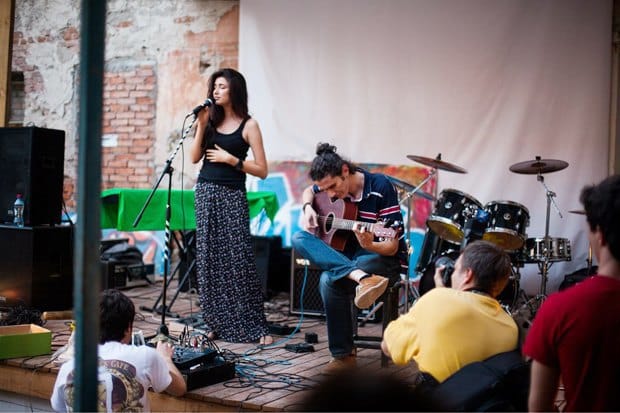
Open Air
Designers of the Collision Creative Workshop developed their own style of event, setting the program with concerts, film screenings, literary readings, and an open gallery, named Fishkindom, in the basement. On the stage, young musicians performed, and in the yard, painters re-painted the stage, benches and tables and even launched an art gallery in the basement. After sunset, guests wrapped themselves in blankets and watched a movie under the stars.
City officials were quite pleased: we did not ask them for money, and we provided art therapy for kids from a local orphanage, led master classes for them, and independently settled issues with our neighbors. The manager of a landscaping store supported us by giving us 100 liters of paint. A local confectionary, Baker Street, gave us sweets to give people at the open air event, and one evening our friends from a picture framing studio brought us eight pizzas which had the word “Perimeter” written in fresh herbs on top.
After the five days of Open Air, we have held other events in Nalchik and beyond. We participated in the festival of youth culture, called Art Square, in Pyatigorsk. Our conservative neighbors, the businesses, have seen a real change in the environment, at least within 100 meters. They have offered to help us complete the repairs. The Minister of Culture has expressed a desire to visit our events. Young filmmakers shoot their coursework in the Fishkindom Gallery. Plus, in the evenings, the community meets to discuss ideas, and this is the backbone of our project. In the end of September, we presented a new project. It’s been whispered to us that the republic head may come to visit us. We think that together with them our work will be easier.
Read this article in Russian – and see lots more pictures – at The Village.


